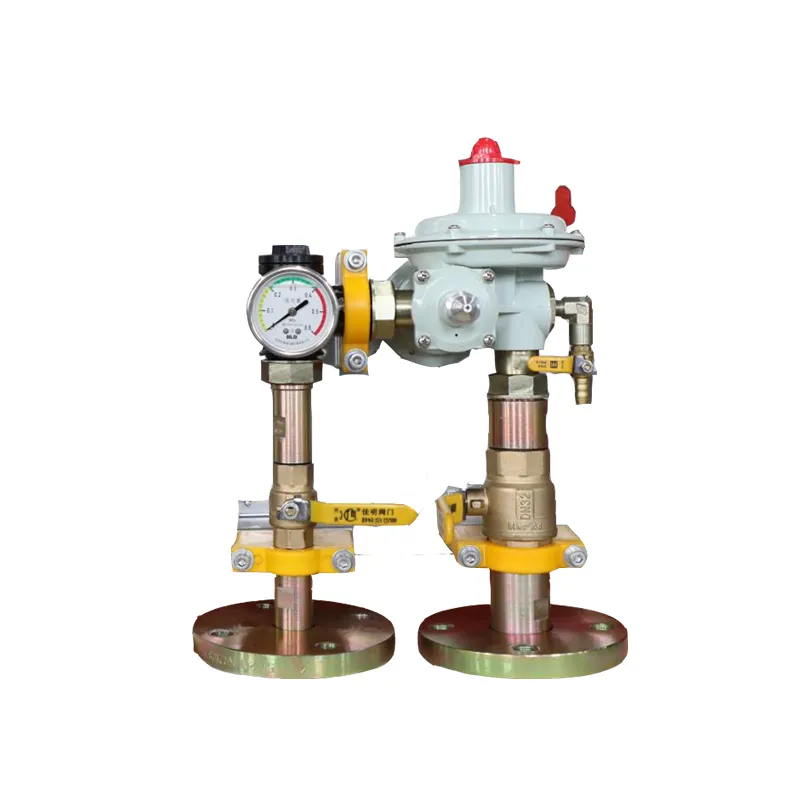
Dec . 14, 2024 11:59
Back to list
Natural Gas Pressure Regulation Valve for Safe Control and Distribution
Understanding Natural Gas Pressure Reducing Valves
In the realm of natural gas distribution, pressure reducing valves (PRVs) play a pivotal role in ensuring the safe and efficient delivery of gas to consumers. As natural gas moves from high-pressure systems in pipelines to lower-pressure applications in homes and industries, PRVs are essential in managing the pressure levels, thus preventing complications that could arise from high pressure.
What is a Pressure Reducing Valve?
A pressure reducing valve is a device that automatically reduces the incoming pressure of natural gas to a desired lower pressure level, ensuring a steady and safe flow of gas. This function is crucial since the pressure in natural gas pipelines can be significantly higher than what is required for residential or commercial use. If left unmanaged, high pressure could lead to leaks, ruptures, or even catastrophic explosions.
How Do Pressure Reducing Valves Work?
The operation of a PRV is based on a simple mechanical principle. It consists of a valve body, an inlet, and outlet port, and a spring-loaded diaphragm. As high-pressure gas enters the valve, it acts on the diaphragm, which moves in response to the pressure exerted on it. The diaphragm's movement opens or closes the valve to adjust the flow rate and maintain a consistent output pressure.
When the downstream demand increases, the pressure drops, causing the diaphragm to move and reduce the valve opening, thus allowing more gas to flow through and stabilizing the downstream pressure. Conversely, if the demand decreases, the valve can close to regulate the gas flow accordingly.
Importance of PRVs in Natural Gas Systems
natural gas pressure reducing valve

1. Safety The primary function of PRVs is to prevent accidents by managing the gas pressure to safe levels. They significantly reduce the risk of system failure due to pressure overload, thus protecting both infrastructure and individuals.
2. Efficiency By maintaining optimal pressure levels, PRVs help enhance the efficiency of gas usage. Properly regulated pressure ensures that appliances and equipment operate smoothly without the strain of excessive pressure.
3. Reliability PRVs contribute to the reliability of gas supply systems. By maintaining consistent pressure, these valves ensure that consumers receive a steady supply of gas, lessening the likelihood of outages.
4. Flexibility Different applications and geographical locations may require different pressure levels. PRVs allow for this flexibility by being adjustable to meet various operational needs, making them suitable for a range of industries, including power generation, heating, and cooking.
Maintenance and Testing
Regular maintenance of pressure reducing valves is crucial for their longevity and performance. Operators should conduct periodic inspections to check for wear and tear, leaks, and other potential issues. Testing the valves for proper functionality ensures that they are working as intended and will respond adequately to fluctuations in gas demand or system pressure.
Conclusion
In conclusion, natural gas pressure reducing valves are indispensable components of gas distribution systems. By regulating pressure, they not only enhance safety and efficiency but also ensure the reliability of natural gas supply. Understanding the functioning and importance of PRVs can aid in fostering a safer and more efficient energy future. As industries continue to evolve and demand for natural gas increases, the role of these valves will remain crucial in the safe management of this vital resource.
Latest news
-
Safety Valve Spring-Loaded Design Overpressure ProtectionNewsJul.25,2025
-
Precision Voltage Regulator AC5 Accuracy Grade PerformanceNewsJul.25,2025
-
Natural Gas Pressure Regulating Skid Industrial Pipeline ApplicationsNewsJul.25,2025
-
Natural Gas Filter Stainless Steel Mesh Element DesignNewsJul.25,2025
-
Gas Pressure Regulator Valve Direct-Acting Spring-Loaded DesignNewsJul.25,2025
-
Decompression Equipment Multi-Stage Heat Exchange System DesignNewsJul.25,2025

